Work Continues on the Shenandoah Division
Since the 05/16/2005 Progress Report, I've been spending most of my time working on
reliability or operational issues which have surfaced
during operating sessions hosted since then. Even though most of my efforts on the railroad over the past couple of
months don't have visible results to show in a progress report, I have finally
decided to repair the scenery on the New Castle peninsula which I salvaged from
the previous version of the Shenandoah Division. As a result, I decided to share
a few "before" and "after" pictures of the scenery work.
First, a little background about the pictures. The New Castle peninsula was
built in six benchwork sections. When I installed the plaster base for the
scenery on this peninsula, I worked across the section boundaries as if they
didn't exist, but I did make provision to cut through the plaster at the section
joints. When we dismantled the old layout in May 2001, we decided to try to move
it in only 3 sections in order to reduce the amount of curved track we'd have to
repair in the new location. We removed the trees at the section boundaries, and
then cut through the plaster with a "Fat Max" drywall saw.
After moving these sections into place for the new layout, they sat on the
floor for about a year before we installed them and connected them to the new
benchwork: you can read about that in the 11/24/2002
Progress Report. If you look closely at the photographs in that report, you
can see the white plaster exposed at the edges of the benchwork sections. I
repaired the track and placed this peninsula into service in early 2003, but I
had always decided not to repair the scenery just yet as I felt the time I spent
doing that would be time away from more important issues related to the
operation of the railroad.
I finally decided the time was right to repair the scenery on this peninsula.
My goal was to restore the scenery to the way it looked in May 2001 before
dismantling this portion of the previous layout. In other words, I haven't
worked on any new scenery.
The repair work went a lot more quickly and smoothly than I had anticipated,
and now I don't have to be concerned any longer with bare white plaster blinding
me and the operating crew. :-)
|
|
Photos of Progress as of August 7, 2005 |
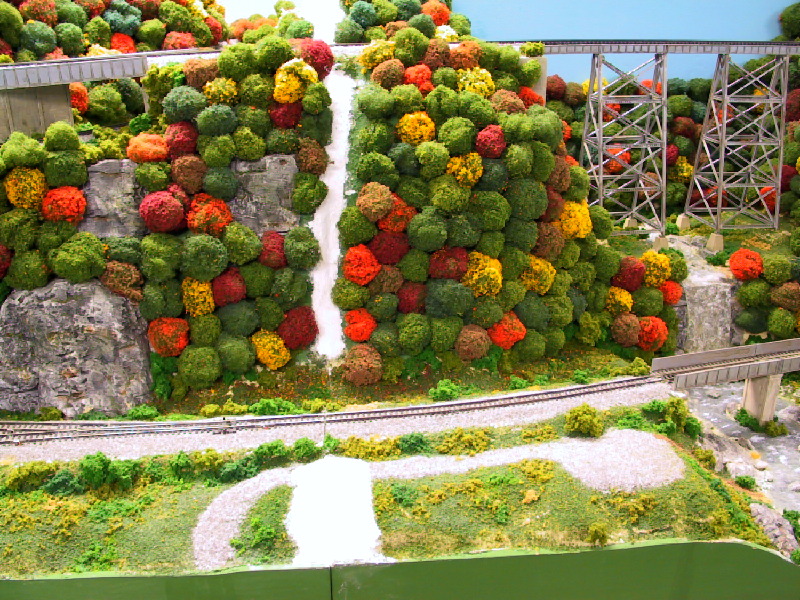
The lower level track in this picture is at the south end of New Castle,
while the upper level track is coming out of the "Corkscrew" to head across
the Craig Creek Viaduct. This view shows the scenery repair after having
applied small strips of Woodland Scenics plaster cloth to the joint between
benchwork sections.
|

Here's the plaster cloth repair between Sandy Ridge and Broad Run Tunnels
on the lower level. The south end of Laurel is on the upper level.
|

This view shows the repair near the south portal of Rich Patch Tunnel and
along the "Corkscrew."
|

The plaster cloth has been repaired at the benchwork section joint at the
north end of New Castle and at the north portal of Bald Knob Tunnel.
|
|
Photos of Progress as of August 14, 2005 |

The newly installed plaster cloth has been painted green just south of
Sandy Ridge Tunnel, and new trees have been planted at the south end of
Laurel.
|

Another view of the newly planted trees at the south end of Laurel.
|

Close-up view of the repairs south of Sandy Ridge Tunnel.
|
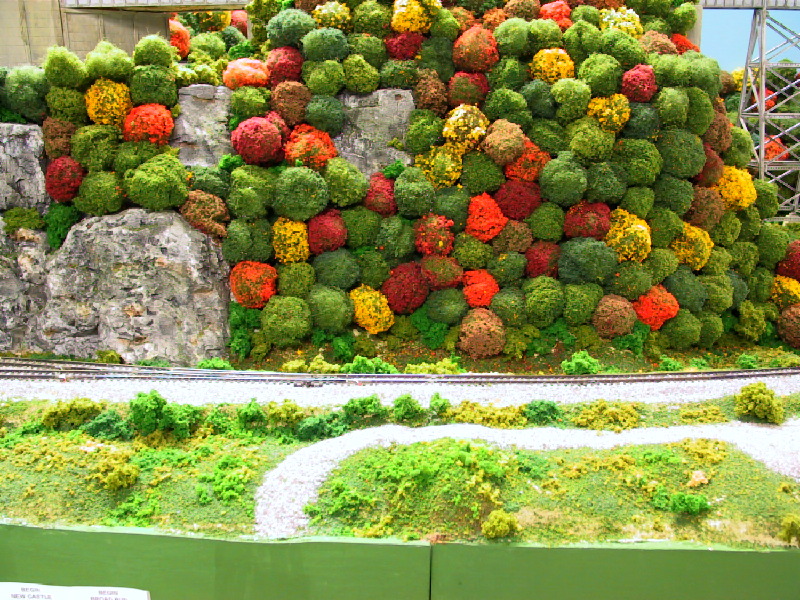
Close-up view of the newly installed trees, along with the repaired
gravel access road and ground cover, at the south end of New Castle.
|
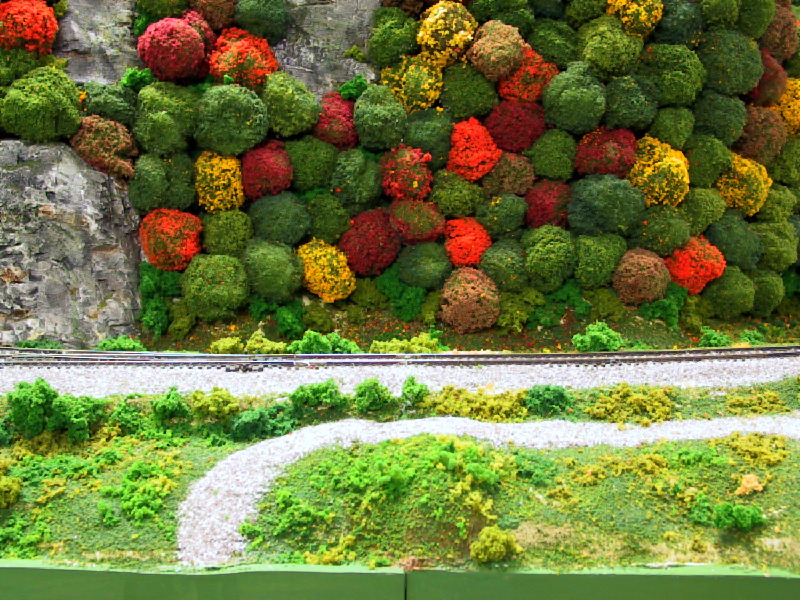
Another view of the access road at the south end of New Castle.
|
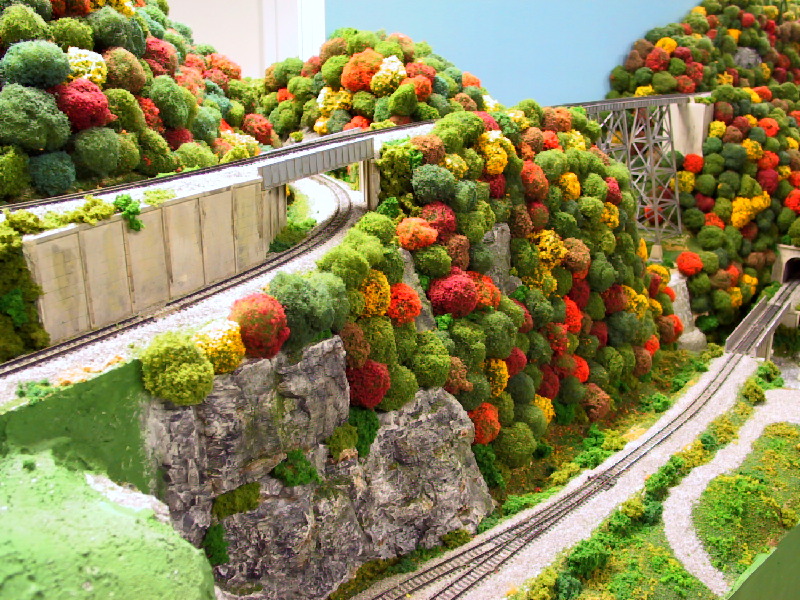
Overall view of the trees at the south end of New Castle and in the
"Corkscrew" area.
|

A view of the "Corkscrew" from near the south portal of Rich Patch
Tunnel.
|

Repairs to Craig Creek near the Apple Track at the north portal of McAfee
Tunnel in New Castle.
|
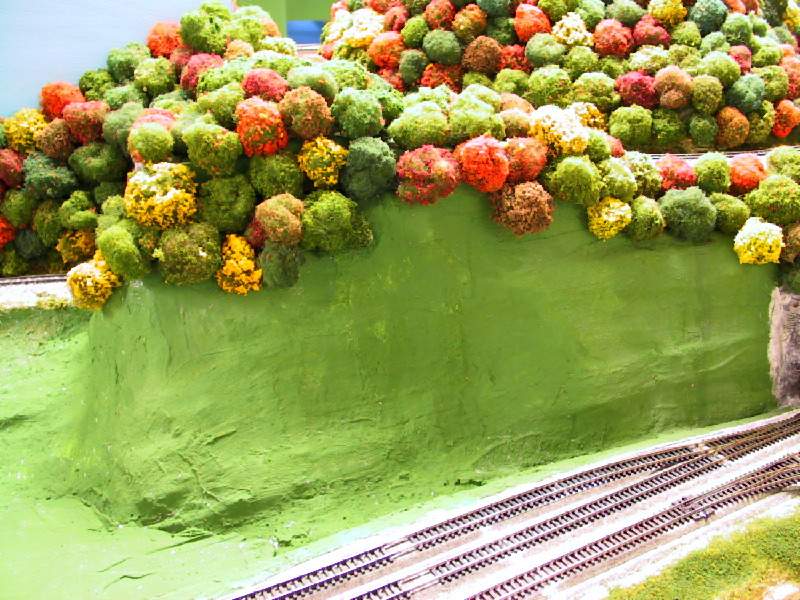
View of the area near the south portal of Rich Patch Tunnel.
|

North end of New Castle and north portal of Bald Knob Tunnel. |

Cherie has completed the painting of the "fascia" at the top of the
entrance stairs on the back of the layout. Since she's finished with that
work, I was able to install the fascia for the Appalachian Power Co. spurs
at Laurel (upper level) and James River spurs at Catawba (lower level).
These spurs come through the backdrop to provide additional capacity at both
industry locations. The fascia has been primed since this photo was taken,
and it will be painted in the near future.
|
This page was last updated on
01/01/11.